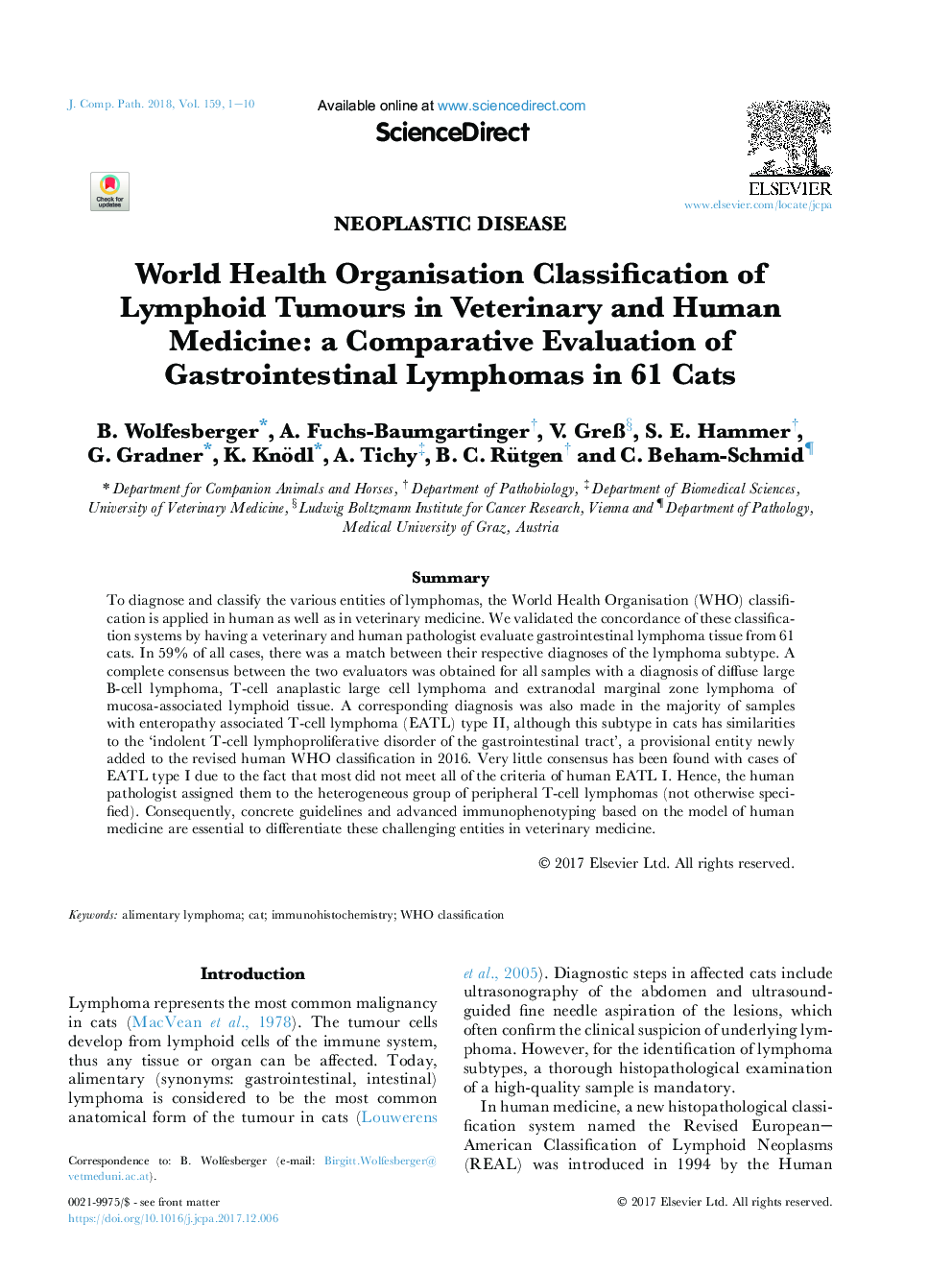| Article ID | Journal | Published Year | Pages | File Type |
|---|---|---|---|---|
| 8500432 | Journal of Comparative Pathology | 2018 | 10 Pages |
Abstract
To diagnose and classify the various entities of lymphomas, the World Health Organisation (WHO) classification is applied in human as well as in veterinary medicine. We validated the concordance of these classification systems by having a veterinary and human pathologist evaluate gastrointestinal lymphoma tissue from 61 cats. In 59% of all cases, there was a match between their respective diagnoses of the lymphoma subtype. A complete consensus between the two evaluators was obtained for all samples with a diagnosis of diffuse large B-cell lymphoma, T-cell anaplastic large cell lymphoma and extranodal marginal zone lymphoma of mucosa-associated lymphoid tissue. A corresponding diagnosis was also made in the majority of samples with enteropathy associated T-cell lymphoma (EATL) type II, although this subtype in cats has similarities to the 'indolent T-cell lymphoproliferative disorder of the gastrointestinal tract', a provisional entity newly added to the revised human WHO classification in 2016. Very little consensus has been found with cases of EATL type I due to the fact that most did not meet all of the criteria of human EATL I. Hence, the human pathologist assigned them to the heterogeneous group of peripheral T-cell lymphomas (not otherwise specified). Consequently, concrete guidelines and advanced immunophenotyping based on the model of human medicine are essential to differentiate these challenging entities in veterinary medicine.
Related Topics
Life Sciences
Agricultural and Biological Sciences
Animal Science and Zoology
Authors
B. Wolfesberger, A. Fuchs-Baumgartinger, V. GreÃ, S.E. Hammer, G. Gradner, K. Knödl, A. Tichy, B.C. Rütgen, C. Beham-Schmid,
